Identify the three alkynes A, B (CH10H18), and C (C10H16) which give the following reactions.
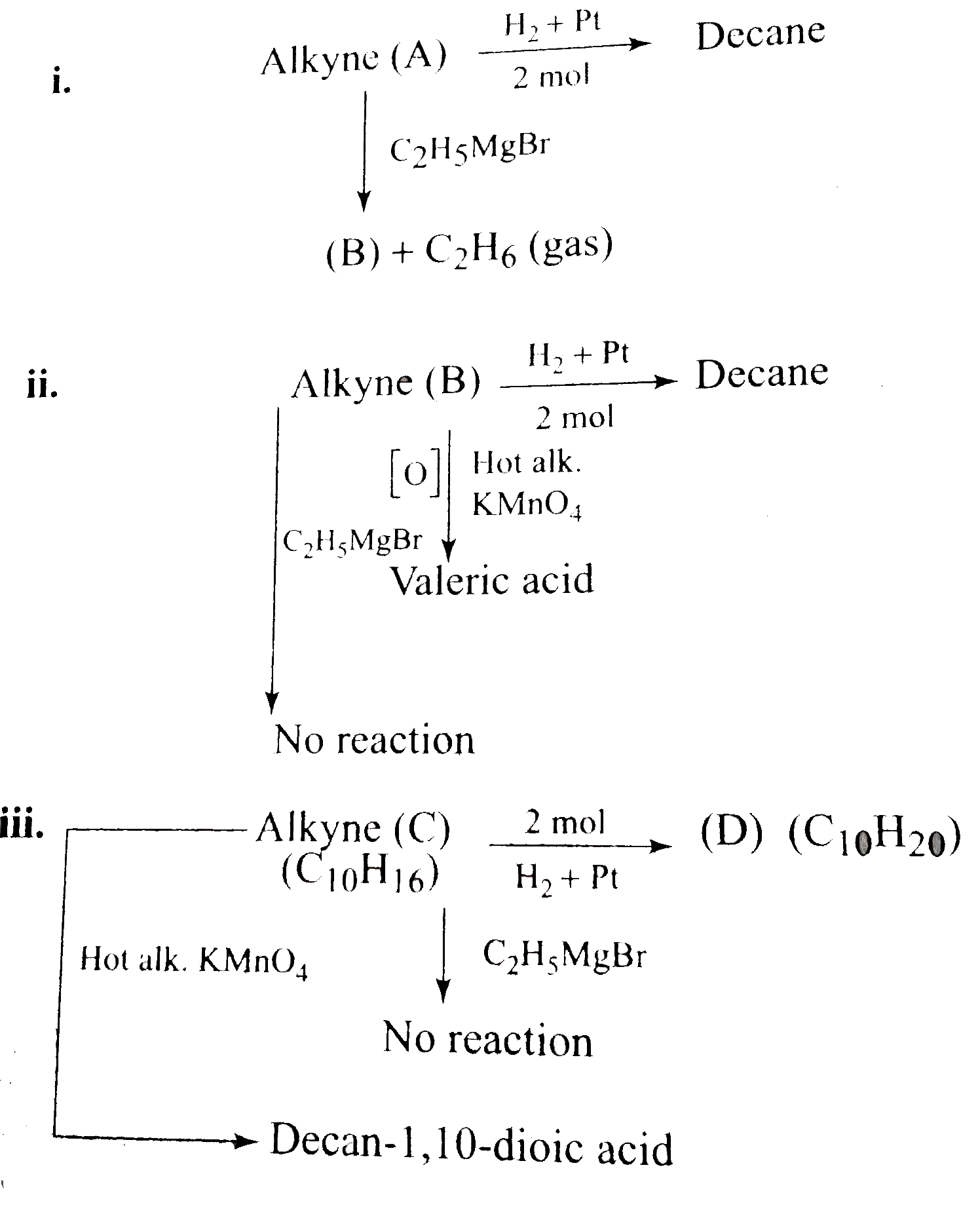
i. Since alkyne (A) reacts with Grigand reagent, so it must have a terminal acidic H atom.
Structure of (A) is:
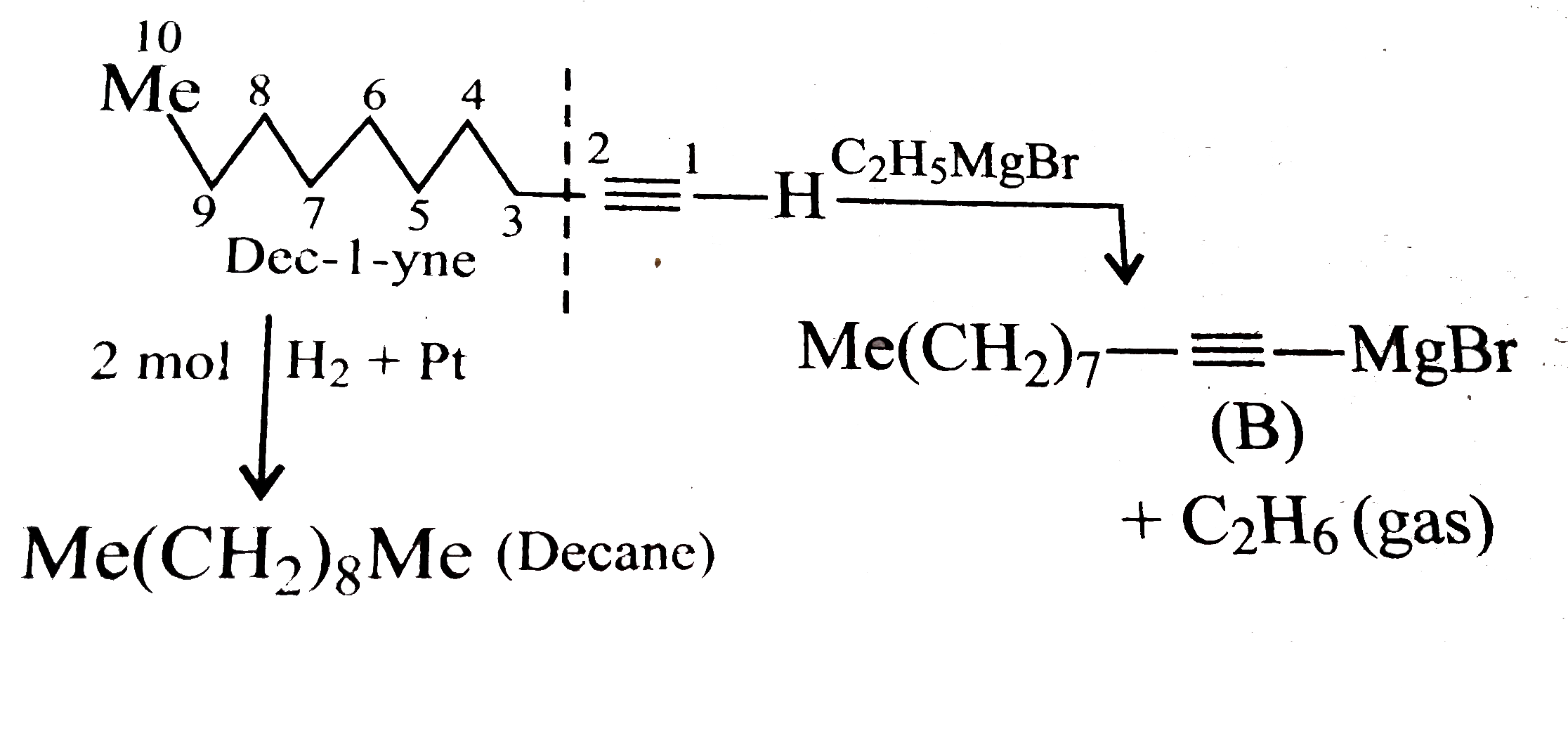
ii. Since alkyne (B) has no reaction with Grignard reagent, it should be internal and symmetrical alkyne, as evident from the oxidative cleavage reaction with hot alkaline KMnO4.
Structure of B is:
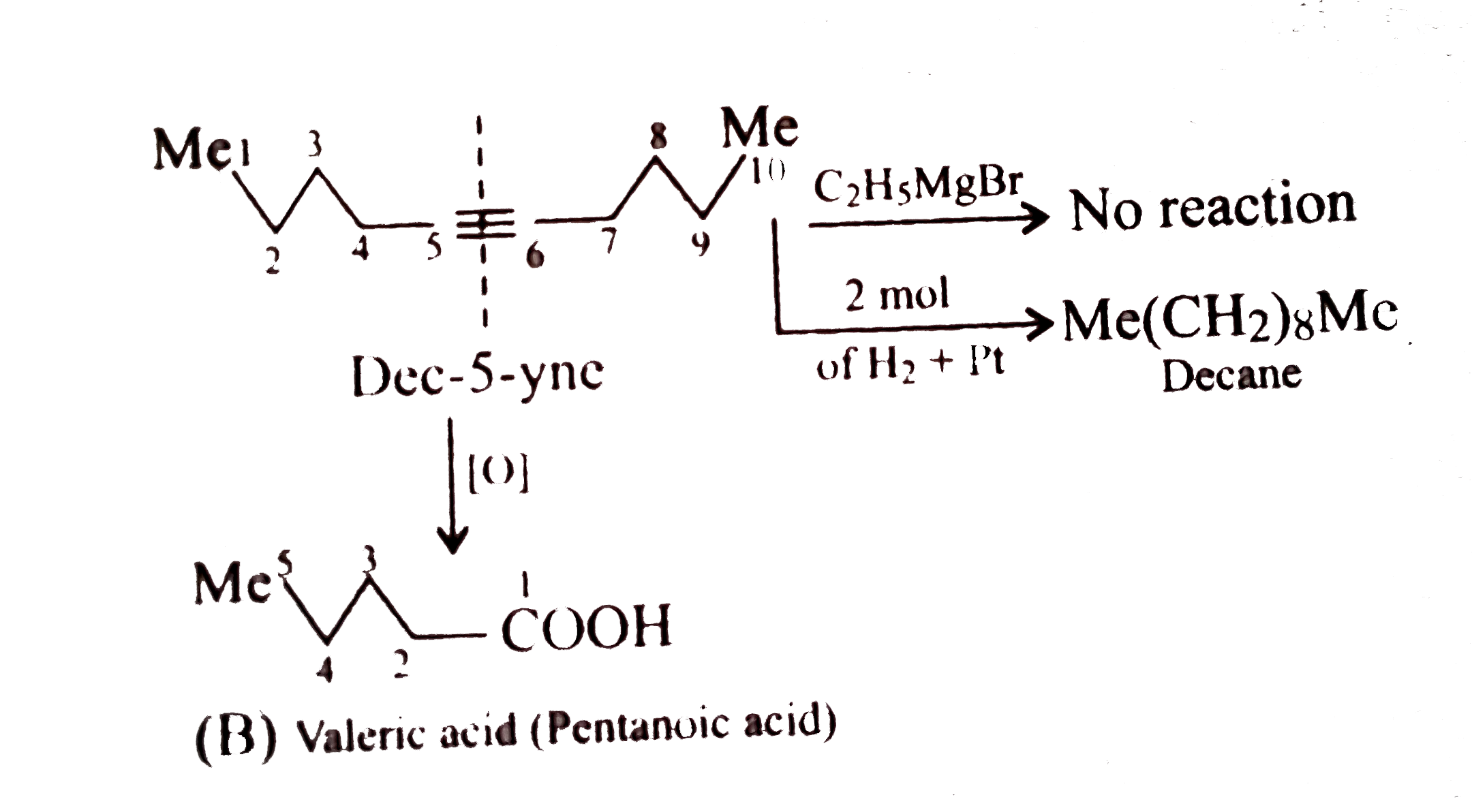
iii. DU in (D)=(2×10+2)−202=1∘
C and D must be by cyclic ring of 10 atoms.
Structure of C:
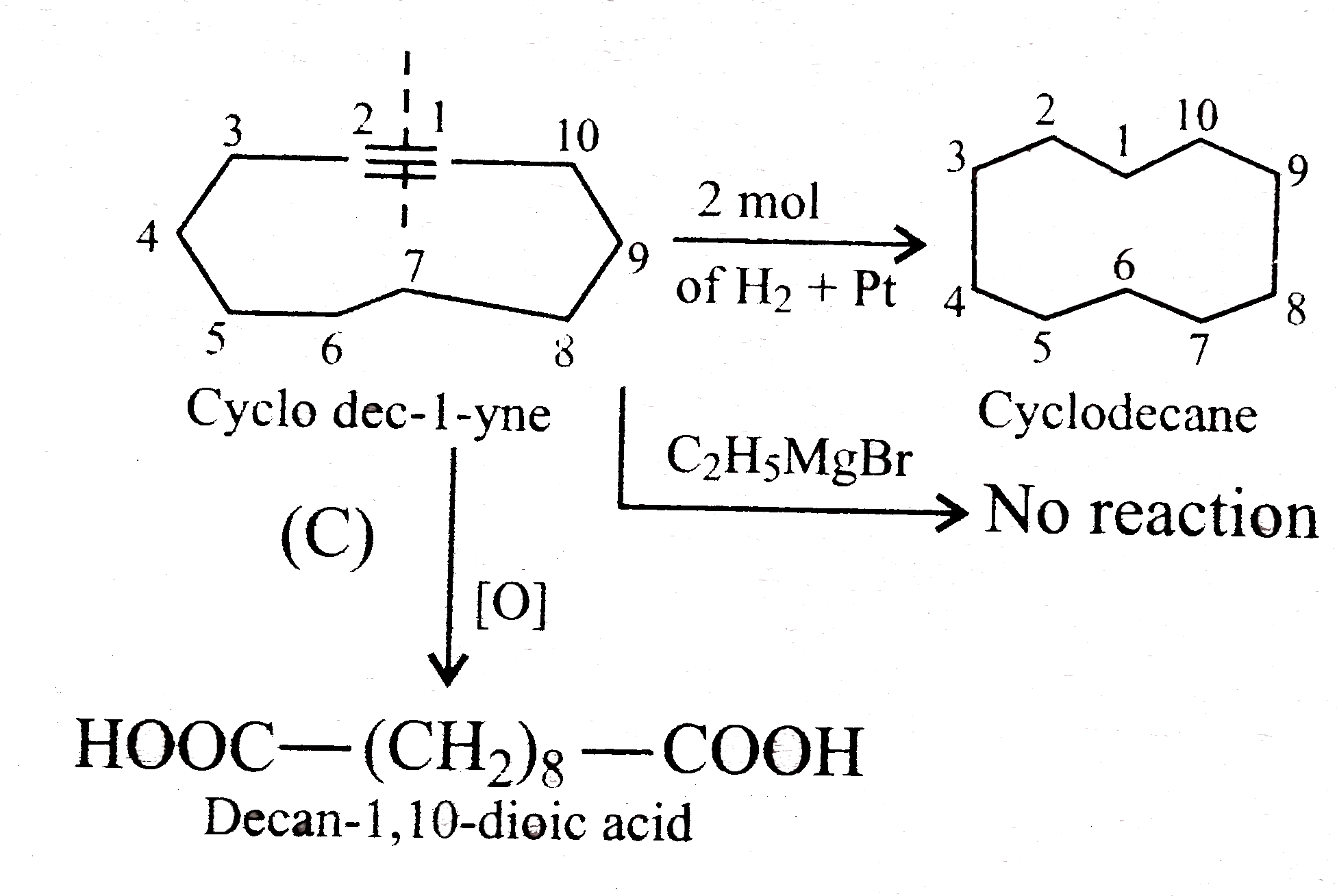
Topper's Solved these Questions
- ALKYNESBOOK - CENGAGE CHEMISTRYCHAPTER - ALKYNESEXERCISE - Exercises (Linked Comprehension Type)
51 Videos
- ALKYNESBOOK - CENGAGE CHEMISTRYCHAPTER - ALKYNESEXERCISE - Exercises (Multiple Correct Answers Type)
25 Videos
- ALKYNESBOOK - CENGAGE CHEMISTRYCHAPTER - ALKYNESEXERCISE - Solved Examples
24 Videos
- ALKENES AND ALKADIENESBOOK - CENGAGE CHEMISTRYCHAPTER - ALKENES AND ALKADIENESEXERCISE - Single correct Answer
14 Videos
- APPENDIX - INORGANIC VOLUME 1BOOK - CENGAGE CHEMISTRYCHAPTER - APPENDIX - INORGANIC VOLUME 1EXERCISE - chapter-7 Single correct answer
1 Video
Similar Questions
Knowledge Check
Which of the following reactions gives H2C=C=C=CH2
ACH2Br−CBr=CH2Zn/CH3OH−−−−−−−→BHC≡C−CH2−COOHAq.K2CO3−−−−−−→40∘CCCH2Br−C≡C−CH2BrZn−−→HeatD2CH2=CH−CH2−I→C6H5−O−CH2CH3HI−−→
which of the following is not formed in this reaction ?AC6H5−IBC6H5−OHCBoth of theseDNone of theseO16 ||CH3−C−HD2O18−−−→D⊕CH3−C−H || .18O
Give the following reaction intermediate is :A .18OD |CH3−C−D | .16ODB .18OD |CH3−C−H | .16ODC .16OD |CH3−C−H | .16ODD .18OD |CH3−C−H | .18OD
The molecular formula of 'A' is C10H18 and B is C18H36 .Name the homologous series to which they belong.
View SolutionDeduct the structural formul of a compound (A)(C10H16) the gives (B) as the only compound on oxidation with acidic KMnO4.
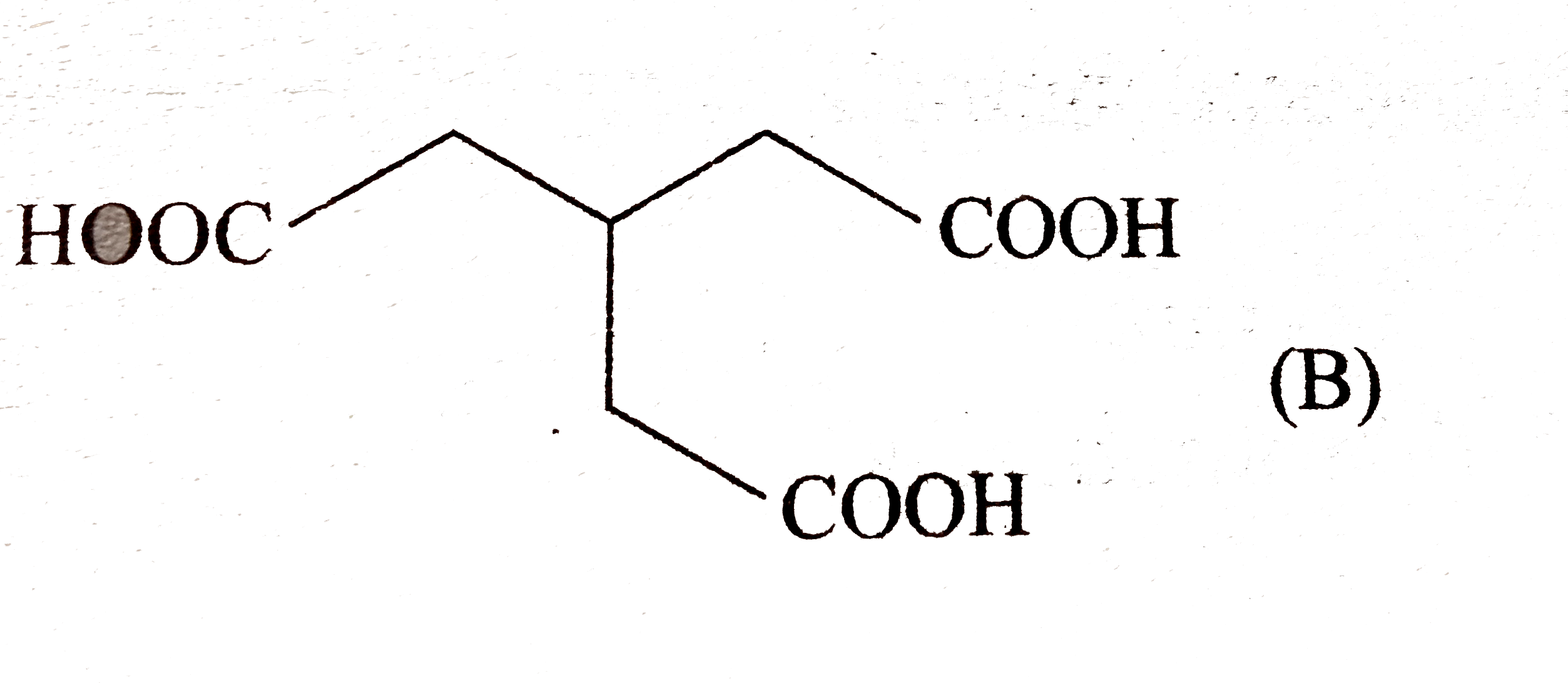
View SolutionC2H4,C4H10,C3H8,CH4
View SolutionC5H10 (A) can show Cannizzaro's reaction. (A) on treatment with Al(OC2H5)3, forms C10H20O2 (B) which on hydrolysis gives acid (C) and alcohol (D). Compounds (A), (B) and (C) each on reaction with LiAlH4 is converted to alcohol (D). Identify (A), (B), (C) and (D). Give the reactions involved.
View SolutionAn organic compound A has molecular formula C10H17Br and it is non-resolvable. A does not decolourize brown colour of bromine water solution. A on treatement with (CH3)2COK/(CH3)3COH yields B as majot product. B on treatment with H2/Pt yields (C10H16) which on treatment with CI2/hv yields three monochloro derivative. Also B on boiling with acidic permanganate solution yields C(C10H16O3)C. on heating with sodalime yields D(C9H16O).D on reducing with LiAIH4 followed yields C(C10H16O3).C on heating with sodalime yields D(C9H16O).D on reducing with LiAIH4 followed by heating product with concentrated H2SO4 yields E(C9H16) as major product. E on treatment with ozone followed by work-up with Zn−H2O yields 6-Ketononanal.
Compound B is:
View Solution
